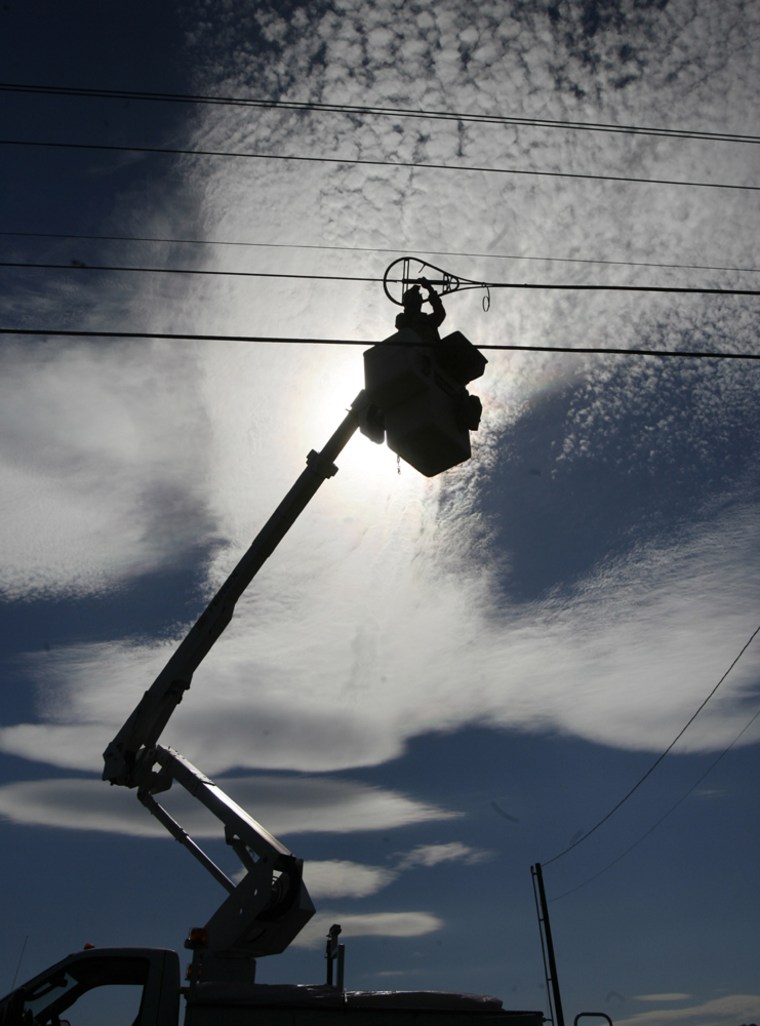Adam and Anita Paulk had a nice home outside Temple, Texas, with a big yard and a 10-minute commute to his job. But in Internet terms, the house was on Slow Lane. There was no high-speed Internet connection available.
So the Paulks pulled up stakes in 2005 and built a home in a new subdivision. It was a little further from his job, but at least it could get broadband.
"It was worth it, not to hear my husband bitch about the connection anymore," Anita Paulk said.
In less than a decade, broadband has gone from a luxury to a must for many people, and for some of them, it's started to influence their real-estate decisions. Homes that have broadband are winning out over more remote ones that don't. Areas with better and faster broadband are becoming more desirable than ones with slower access.
Edward Redpath, a real estate broker in Hanover, N.H., said he has seen deals fall through once the buyer realizes a home doesn't get broadband. Across the Connecticut River in Norwich, Vt., only the center of the village has cable.
"We have a lot of people that don't go into the rural neighborhoods or consider the rural neighborhoods because they need the broadband," Redpath said. "Our lifestyle demands speed."
There are several intersecting trends at play. One is that our reliance on broadband is increasing. About 55 percent of Americans have broadband at home, according to a recent survey from the Pew Internet and American Life Project — although more people have service available to them and don't buy it.
But the spread of broadband is slowing down. Getting the last 10 percent or so of homes connected is an expensive proposition, because they're in small communities or far from other homes. Over time, the lack of universal broadband, along with higher gasoline prices, could pull people from the countryside toward cities and suburbs.
To connect the most distant Vermont homes in Redpath's area, the local phone company, FairPoint Communications Inc., will be using unconventional means. Starting next year, it will use wireless links to fulfill a pledge of providing broadband to its entire service area in the state.
Wireless broadband coverage from cellular carriers is also expanding rapidly, but it still follows major roads and population centers. Even if you can get it, it's slower than wired broadband and there are monthly download limits.
As a last resort, satellite broadband is available nearly everywhere. But it has strict limits on how much data a subscriber can download, and some activities, like playing action games online, are impossible because the signal takes time to travel to space and back. In any case, the satellites don't have the capacity to serve everyone who can't get wired broadband.
The uneven access to wired broadband has led to calls for involvement by the federal government, which so far has taken a hands-off approach. The chairman of the Federal Communications Commission, Kevin Martin, recently suggested using the Universal Service Fund, which subsidizes phone service in rural areas, to promote broadband coverage as well.
Even in built-up areas, broadband has become a factor for some people when they decide where to live, at least if they work from home.
When Daniel Skripka started to find downtown Minneapolis too expensive, he checked out the suburbs, and settled on Chaska, which has a municipal wireless Internet network that costs him $18 per month. Skripka uses it as a backup when he's working from home and his DSL connection takes a dive, which happens about once a month.
"The most important factor for the location was the availability of reliable Internet," Skripka said.
In luxury apartments, the standard is now to have at least two choices for broadband, according to Henry Pye, the director of resident services and technology at JPI Partners LLC, which owns buildings across the country. It's his job to make sure they get broadband, because, he said, you can't rent out apartments without broadband anymore.
"It might as well be water," he said.
Andru Edwards, who runs the technology blog Gearlive.com, moved from Seattle to a suburb last year so he could get a fiber-optic connection from Verizon Communications Inc. He had a cable modem at his old apartment, but it took too much time to upload high-definition video clips for the blog.
"It definitely took our business to the next level. I've never looked back," he said.
Central Seattle is served by another phone company, Qwest Communications Inc., which isn't drawing fiber all the way to homes like Verizon does. That points to a coming divide between places that can get broadband and those that can get what some are calling "ultra broadband." Fiber-optic connections already far outstrip DSL speeds, and could be upgraded to even higher speeds. Cable modems in many areas are also getting a big speed boost in the next few years.
As for the Paulks, they're considering making another move, but not to get faster broadband. They're thinking about moving back to their old house, which they still own, because DSL became available there year ago.
"In my opinion," said Adam Paulk, "it was perfect in every way except it lacked broadband Internet."
